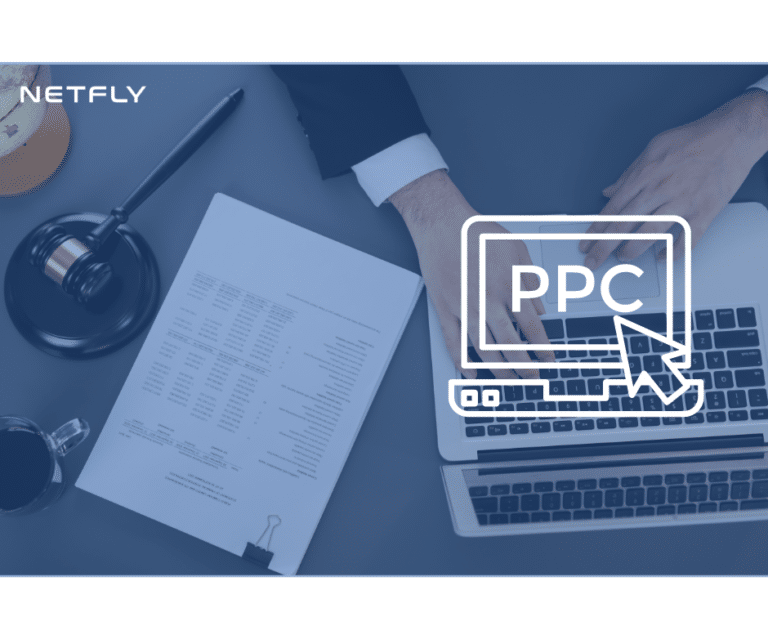When it comes to maintaining visitor interest on your law firm’s website, ensuring peak load speed and responsiveness is key. By fine-tuning these aspects, you can enhance user experience and potentially transform casual browsers into valuable clients. But how exactly can you achieve this delicate balance of efficiency and engagement? Let’s explore some effective strategies that could make all the difference for your online presence.
Key Takeaways
- Utilize tools like Google PageSpeed Insights for optimization suggestions.
- Implement responsive design for a seamless user experience.
- Optimize images and videos with advanced compression techniques.
- Leverage browser caching for faster loading times.
- Test and monitor performance regularly for optimization.
Importance of Website Load Speed
Ensuring swift website load speed is essential for maximizing user engagement and search engine rankings in the dynamic digital landscape of today. User experience is directly tied to how quickly your website loads. A slow-loading site frustrates users, leading to high bounce rates and diminished engagement. When users have to wait for content to appear, they’re more likely to abandon the site, impacting your overall user experience metrics negatively.
Moreover, from an SEO perspective, website load speed plays a vital role. Search engines like Google consider page speed as a ranking factor. Faster-loading websites tend to rank higher in search results, providing SEO benefits such as increased visibility and organic traffic. By optimizing your website’s load speed, you not only improve user experience but also enhance your chances of ranking well on search engine result pages.
To enhance user experience and reap SEO benefits, focus on technical aspects that influence load speed. Optimize images to reduce file sizes, leverage browser caching, minimize HTTP requests, and enable compression to streamline data transfer. Additionally, consider utilizing content delivery networks (CDNs) to distribute content geographically for quicker access. By prioritizing website load speed, you create a seamless browsing experience for users while boosting your site’s visibility and rankings in search engines.
Impact of Responsiveness on Engagement
How does the impact of your website directly influence user engagement metrics and overall site performance?
When it comes to keeping potential clients engaged on your law firm’s website, responsiveness plays a critical role. Let’s explore the effect of responsiveness on engagement and conversion rates:
- User Experience: A responsive website guarantees a seamless and enjoyable user experience across various devices, leading to increased user engagement.
- Bounce Rates: Enhanced responsiveness reduces bounce rates as visitors are more likely to stay on your site when it loads quickly and displays correctly.
- Page Views: Responsive design motivates users to explore more content on your site, boosting page views and potentially extending their visit duration.
- Brand Perception: A fast and responsive website enhances your law firm’s credibility and professionalism in the eyes of visitors.
- Conversion Rates: Responsive websites tend to have higher conversion rates, as users are more likely to take desired actions when they can easily navigate and interact with your site.
Tools for Performance Optimization
To enhance your website’s performance, consider utilizing Speed Testing Tools to identify bottlenecks and areas for improvement.
Implement Image Compression Techniques to reduce file sizes without compromising quality, thereby boosting load speeds.
Additionally, Code Minification Strategies can streamline your website’s code for faster rendering and improved user experience.
Speed Testing Tools
For effective performance optimization, utilizing speed testing tools is crucial in evaluating website load speed and responsiveness accurately. These tools provide invaluable insights into your website’s performance metrics, allowing you to identify areas for improvement swiftly. Here are five essential speed testing tools to explore:
- Google PageSpeed Insights: Offers optimization suggestions and scores your website’s performance.
- Pingdom: Provides detailed performance reports and highlights areas for enhancement.
- GTmetrix: Analyzes your site’s speed, provides actionable recommendations, and monitors performance over time.
- WebPageTest: Allows for in-depth performance testing from multiple locations and various browsers.
- YSlow: Offers performance grades and suggests ways to improve speed and responsiveness.
Image Compression Techniques
Utilize advanced image compression techniques to enhance website performance and optimize loading speeds effectively. By reducing image file sizes without compromising image quality, loading efficiency can be greatly improved. Tools like TinyPNG, JPEG Optimizer, and ImageOptim are instrumental in achieving this goal. These tools employ algorithms to strip unnecessary metadata and reduce color information, leading to smaller file sizes.
Additionally, implementing responsive images that adjust based on the user’s device can further boost loading efficiency. Prioritizing image optimization not only accelerates website loading times but also enhances user experience, reducing bounce rates and increasing engagement.
Consistently monitoring and updating image compression strategies will guarantee that your law firm’s website maintains peak performance levels.
Code Minification Strategies
When optimizing website performance, employing code minification strategies is crucial for enhancing loading speeds and overall efficiency. Code minification involves removing unnecessary characters like whitespaces and comments from code files, reducing their size and improving load times.
Here are some strategies to optimize code minification:
- Utilize Minification Tools: Tools like UglifyJS, Closure Compiler, or online services can automatically minify your code.
- Consider Browser Compatibility: Make sure minified code remains compatible across different browsers to maintain a seamless user experience.
- Implement Resource Consolidation: Combine multiple CSS or JavaScript files into one to reduce HTTP requests and speed up loading times.
- Regularly Review and Update Minified Code: Stay vigilant for any issues that may arise from minification and update code when necessary.
- Test Performance Impact: Monitor website performance metrics after minification to assess improvements and make further optimizations.
Mobile-Friendly Design Essentials
Efficient mobile design is crucial for enhancing user experience and boosting engagement on legal websites. When it comes to mobile navigation, simplicity is key. Guarantee that your menu is easily accessible, with clear and concise labels to guide users seamlessly through your site. Cluttered menus can frustrate visitors and lead to high bounce rates, impacting user experience negatively.
Prioritize responsive design that adapts to various screen sizes, ensuring that all content is displayed correctly regardless of the device used. User experience hinges on smooth interactions, so optimize touch elements like buttons and links for easy tapping. Remember, users expect fast load times on mobile devices, so streamline your design to minimize loading delays.
Incorporate intuitive gestures like swiping and pinching to enhance navigation and make the user journey more intuitive. Consistency in design elements across different pages fosters familiarity and helps users navigate with ease. Additionally, leverage white space effectively to prevent overcrowding and maintain a clean, professional look.
Minimizing Image and Video Load Times
When aiming to minimize image and video load times on your website, focus on implementing image compression techniques and video optimization strategies.
These strategies will help reduce file sizes without compromising quality, ensuring faster loading times for your users.
Image Compression Techniques
Utilize advanced image compression techniques to greatly reduce image and video load times on your website. Efficient image compression is essential for enhancing responsive design and improving user experience.
Consider the following strategies to optimize your images:
- Use tools like JPEG Optimizer or TinyPNG to compress images without compromising quality.
- Implement lazy loading to defer offscreen images until they’re needed, reducing initial load times.
- Convert images to modern formats like WebP for better compression ratios.
- Serve responsive images based on the user’s viewport size to prevent unnecessary large downloads.
- Leverage content delivery networks (CDNs) to distribute image files closer to users, reducing latency.
Video Optimization Strategies
How can you enhance website performance by optimizing video loading times efficiently?
Video content optimization is vital for reducing load times. Start by choosing the right video format like MP4, WebM, or FLV for better compatibility and faster loading. Compress videos without compromising quality using tools like HandBrake or Adobe Media Encoder.
Implement lazy loading to defer offscreen videos, loading them only when the user scrolls to them. Utilize Content Delivery Networks (CDNs) to cache videos closer to users, reducing latency. Additionally, consider using adaptive streaming to deliver the best quality video based on the user’s bandwidth.
These load time reduction strategies can greatly improve user experience and engagement on your law firm’s website.
Leveraging Browser Caching
To improve website performance and speed, optimizing browser caching is an important technique that can greatly reduce loading times for returning visitors. Leveraging browser caching involves storing static files of a website on a visitor’s device, enabling quicker loading upon subsequent visits. Here are five essential strategies to maximize caching efficiency and boost website performance:
- Set Appropriate Cache-Control Headers: Configure HTTP headers to specify caching policies for different types of files, determining how long browsers should cache them.
- Utilize ETags for Efficient Validation: Implement ETags (entity tags) to help browsers validate cached components, reducing server requests when content hasn’t changed.
- Leverage Local Storage for Client-Side Caching: Store elements like CSS, JavaScript, and images in the browser’s local storage for faster access without repeated downloads.
- Implement Cache Busting Techniques: Employ methods like versioning file names or appending query strings to URLs to force browsers to fetch the latest versions of resources.
- Utilize Content Delivery Networks (CDNs): Distribute cached content across geographically dispersed servers through CDNs to minimize latency and enhance loading speed for users worldwide.
Code Optimization Techniques
Implementing efficient code optimization techniques is crucial for enhancing website performance and speed. When it comes to optimizing your law firm’s website, focusing on both server-side optimization and client-side rendering can greatly impact how quickly your site loads and responds to user interactions.
Server-side optimization involves fine-tuning the backend of your website. This includes optimizing databases, utilizing caching mechanisms, and minimizing server response times. By reducing the time it takes for your server to process requests and deliver content, you can improve the overall speed and responsiveness of your site.
On the other hand, client-side rendering focuses on optimizing how web browsers render and display your website’s content. This includes minimizing the number of HTTP requests, leveraging browser caching effectively, and optimizing images and scripts for faster loading times. By streamlining the rendering process on the client-side, you can ensure that your website loads quickly and provides a seamless user experience.
Testing and Monitoring Strategies
Consistently evaluating your website’s performance through thorough testing and monitoring is important for maintaining peak functionality and user experience. To guarantee your law firm’s website is optimized for success, consider the following strategies:
- Implement Automated Testing: Utilize automated tools to regularly test your website’s performance, functionality, and responsiveness. This approach helps in quickly identifying any issues that may impact user experience.
- Monitor Loading Speed: Keep a close eye on your website’s loading speed using tools like Google PageSpeed Insights or GTmetrix. Ideal loading speed is essential for retaining visitors and improving user satisfaction.
- Track Performance Metrics: Monitor key performance indicators such as time to first byte, time to interactive, and overall page load time. These metrics provide valuable insights into the user experience and can guide optimization efforts.
- Conduct A/B Testing: Experiment with different website elements, layouts, or content to determine what resonates best with your audience. A/B testing can help improve user engagement and conversion rates.
- Regularly Review Analytics Data: Analyze user behavior data from tools like Google Analytics to understand how visitors interact with your website. This information can highlight areas for improvement and guide ongoing optimization efforts.
Continuous Improvement for User Experience
Enhance user experience on your law firm’s website through iterative enhancements and data-driven optimizations. By focusing on continuous improvement for user experience, you can have a substantial impact on user retention and conversion rates. Regularly analyzing user behavior on your website and making informed adjustments based on this data is vital for keeping visitors engaged and converting them into clients.
To enhance user retention, consider implementing features like personalized content recommendations, intuitive navigation, and quick access to essential information. By keeping users on your site longer and providing them with valuable content tailored to their needs, you can increase the likelihood of them returning and engaging with your services.
Conversion rates can be improved by optimizing your website’s call-to-action buttons, forms, and overall user flow. Conduct A/B testing to determine which elements perform best and continually refine your design based on these insights. Simplifying the conversion process and removing any unnecessary barriers can lead to a higher conversion rate and more clients for your law firm.
Frequently Asked Questions
How Can Server Location Impact Website Load Speed?
When considering how server location impacts website load speed, remember that network latency and performance are key factors affected by geographical proximity.
The ideal a server is to your audience, the faster data can be transmitted, improving speed. Strategic server placement minimizes delays caused by physical distance, enhancing overall user experience.
Selecting strategic server locations can greatly boost website performance and responsiveness.
What Role Does CDN Play in Improving Website Responsiveness?
When it comes to improving website responsiveness, the CDN benefits play a vital role in enhancing performance. By leveraging CDN capabilities, you can optimize website speed efficiently.
Content Delivery Networks (CDNs) distribute content across multiple servers, reducing latency and improving loading times. Incorporating a CDN into your website infrastructure can greatly enhance user experience and guarantee faster page loading, ultimately boosting engagement and satisfaction.
Why Is Lazy Loading Beneficial for Image-Heavy Websites?
When it comes to image-heavy websites, lazy loading proves beneficial for both image optimization and user engagement. By implementing lazy loading, you can greatly enhance website performance.
This technique delays the loading of images until they’re about to be viewed, reducing initial load times. As a result, users experience faster page loading speeds, leading to improved engagement as they can navigate through content seamlessly without being deterred by long loading times.
How Does Minification Optimize Website Code for Speed?
When you minify website code, you’re effectively streamlining it by reducing redundancy. By eliminating unnecessary characters like spaces and comments, the file size decreases, improving performance.
This optimization process guarantees that your website loads faster, enhancing user experience and boosting engagement. While it may seem like a small detail, minification plays an important role in making your site more efficient and responsive to user interactions.
What Is the Significance of A/B Testing in User Experience Enhancement?
When considering user engagement and conversion rates, A/B testing plays a pivotal role in enhancing the user experience.
By systematically comparing variations of web elements, you can make data-driven decisions to optimize website performance.
This method allows you to pinpoint what resonates best with your audience, leading to improved conversion rates and overall user satisfaction.
A/B testing is an essential tool in refining your website’s effectiveness and ensuring a seamless user journey.
Final Thoughts
To sum up, optimizing your law firm’s website load speed and responsiveness is crucial to keeping potential clients engaged.
By implementing performance optimization techniques and ensuring mobile-friendly design, you can enhance user experience and credibility.
Remember, a fast-loading site is worth its weight in gold when it comes to converting visitors into clients.
So, don’t let your website be a needle in a haystack – make it a shining star in the digital universe!










